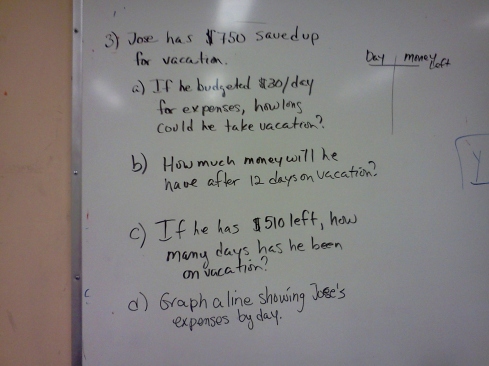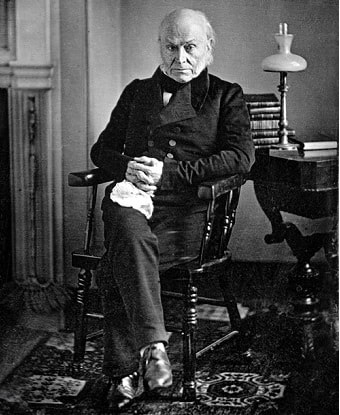Stephanie Simon has a piece out on the increasing graduation rate (while I’m at it, mad props to Simon for the charter school piece, which probably did a lot to alert the general audience to charter selections), and various tweets are hailing the good news but—and this is the funny part—expressing concern that this increase rate might be due to schools lowering standards. Checker Finn has also written disapprovingly of credit recovery.
hahahahahaha. This is me, laughing.
Imagine you have forty 18 year olds, who all read and calculate at the 6th grade level, and another group of forty who all read and calculate at the 10th grade level. They are all high school seniors in a state that requires graduation competency tests. Of this overall collection of eighty, the following distribution is entirely unexceptional (and of course, not the only one possible):
- Fifteen screwed around from the moment they entered high school, have a GPA in the tenths, and are currently in alternative high school filling out worksheets. No reason to worry about high school graduation tests, though, because they passed them first time out.
- Fifteen are, on paper, identical to the previous group, except they haven’t passed any of their graduation tests and so some of their high school time is spent in test prep instead of worksheet completion.
- Fifteen are far behind because they went to a charter school that prided itself on making kids repeat grades, and after two years of failure they went back to public school. They’ve passed the high school graduation tests, and have been doing well since they left the charter, GPAs of 2.0 or so. But they’re far behind, so are taking two hours every day to do online credit recovery.
- Fifteen are at a charter school, where they have a 4.0 GPA with a bunch of AP courses on their transcripts, (thanks, Jay Mathews and your horrorshow of a Challenge Index) but haven’t passed the high school graduation tests.
- Ten recovered from an early bad start, have a solid 2.5 GPA, but haven’t passed their state graduation tests. Half of them have IEPs and official learning disabilities (which means, of course, they aren’t in charters), and so they’ll just waive the requirement. The others will keep plugging away.
- Ten have a solid 2.5 GPA after an early bad start and have passed their state graduation tests.
(Note: In case it’s not clear, the kids who can pass the state grad tests are the ones with tenth grade abilities, the ones who can’t are the ones with sixth grade abilities).
Any diverse high school district in the country, surveying its population in comprehensive, alternatives, online campuses, and charters, could assemble those eighty kids without breaking a sweat.
On the lower half of the ability spectrum, grades and credits are utterly pointless differentiators. Once you accept that we graduate thousands of kids who can’t read, write, or add, there’s no reason to cavil at the method we use to boot them out of the schoolhouse.
No, don’t yammer at me about persistence or compliance or god spare me “grit” of illiterates plugging away at school and therefore being more deserving of the diploma than the lazy but somewhat smarter kid. The concern about the increase was not about persistence or compliance or grit, but academic ability.
And so, rest easy, people. We are already graduating illiterates. The increased graduation rate is not achieved by teaching more kids more effectively, nor is it achieved by shovelling through the bottom feeders and thus devaluing high school diplomas. We are simply taking kids, whether near-illiterate or low but functional ability, who fell off the path that our other near-illiterate or low but functional ability kids stayed on, and putting them on a different conveyor belt.
How? As Simon’s article makes clear, by spending lots and lots of money:
* Launching new schools designed to train kids for booming career fields, so they can see a direct connection between math class and future earnings
* Offering flexible academic schedules and well-supervised online courses so students with jobs or babies can earn credits as their time permits
* Hiring counselors to review every student’s transcript, identify missing credits and get as many as possible back on track
* Improving reading instruction and requiring kids who struggle with comprehension to give up some electives for intensive tutoring
* Sending emissaries door-to-door to hound chronic truants into returning to class
Notice that only one of the techniques used actually involved teaching the kids more—not that I’m in favor of forcing kids to give up electives for intensive tutoring (I still have nightmares). But most of the money spent involved forcing or coaxing the kids back to school—and while the kids are mostly low ability, they are no less and often considerably more intellectually able than kids who just happened to jump through the right hoops.
How does this happen, you ask? As I’ve said many times: grades are a fraud.
Or you could put it another way: the increased graduation rate is a triumph of administrators over teachers. Teachers, except those in majority minority urban schools, are flunking kids with little regard to ability and a whole bunch of regard to compliance, with no regard to administrative or societal cost. Administrators are spending money to work around teacher grades.
In this context, bleats about academic standards do seem a bit….well, silly, don’t they?
And now someone is going to say, “You’re absolutely right. We should be failing kids who don’t or can’t do the work, put teeth into the Fs. That’s the only way to raise academic standards.”
Sorry, that fool’s wrong, too. Higher standards are impossible. No, really. Common Core advocates, much like Mark Wahlberg at the end of Boogie Nights, are parading their favorite toy in front of a mirror in the desperate hope they’ll convince themselves, if no one else. (What, too much? Yeah, it’s late. I’m feeling bleak.) I very much doubt Common Core will ever be implemented (no test, no curriculum, baby), but if it is, nothing will change.
People assume that kids in the bottom half of the ability barrel are there because they suffered a deficit in environment, in parental attention and expectations, in teacher quality. Would that this were so.
Given all the money we’re spending on truancy officers, online credit recovery, counsellors to spot missing transcripts just to push kids through to a diploma, we might just want to consider teaching low ability kids less at a slower pace and stop pretending that they have a “deficit” that can be addressed by college level work and high expectations. We could create a hell of a curriculum for high school kids using nothing more than 8th grade math and vocabulary.
But we won’t do that for the same reason we won’t track, and for the same reason that adminstrators are spending a fortune coaxing kids back to school: namely, the racial distribution would make everyone wince.




























